Orient Line - R.M.S. Ormonde 1917 to 1952 - Page One
Please Note: Firefox and some other Search Engines may not be suitable
Use Google Chrome for this Web Page to load perfectly!
Please Note: All ssMaritime
and other related maritime sites are 100% non-commercial and privately owned,
thus ssmaritime is NOT associated with any shipping
company or any other organisation! Although the author has worked and been
involved in the passenger shipping industry for well over 60 years, but due to
his old age and poor health, he was forced to retire. Yet, he has completed
well over 1,550 Classic Liners, Passenger-Cargo Liners as well as humble
converted C3 converted Migrant Liners, which has transported countless
thousands of folk to the new world, as well on vacations’. Amazingly,
ssmaritime.com has received 573.4 million visitors to date I trust the features
online will continue to provide Classic Liner and Ship enthusiasts both the
information they are seeking, but more so provide a great deal of pleasure and
relive many happy memories!
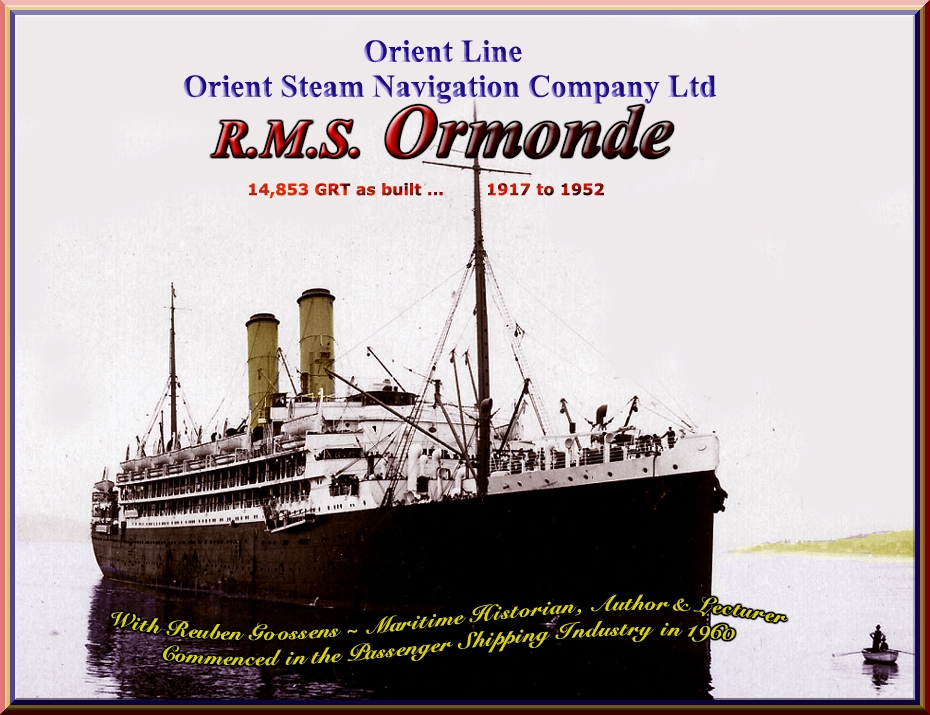
Thus a very thank
you to my ssmaritime supporters for sending me their wonderful images
Sadly, some of the images shown may not be of the highest quality, but they are the best that were available
Page One
1. Construction of a New Orient Liner:
With
some six 12,000 GRT (Gross Registered Ton) liners already operating on the
London / Australia service, Orient Line decided to build
a ship of a relatively similar design, but slightly larger at almost 15,000
GRT. Thus, on October 21, 1913 the keel of the new Orient liner was laid in
Yard 425 at the John Brown & Co Ltd, shipyards at
Yet due to the war being very close, there was a demand for troopships thus early in 1917 work on the ship recommenced and she was completed with spartan quarters suitable for troops. On February 10, 1917 she was launched without a ceremony, or any fuss, and she remained un-named, and she was towed to the John Brown Fit-out berth where she would be completed.
Then
in October 1917, she was officially requisitioned under the “Liner
Requisition Scheme” as a Troop Transport ship. A month later, on November
3, 1917 the completed troopship was delivered to the Orient Line. On December
5, she was officially registered at
2. The Great War - World War One:
November 19, 1917 Troopship Ormonde sailed
from
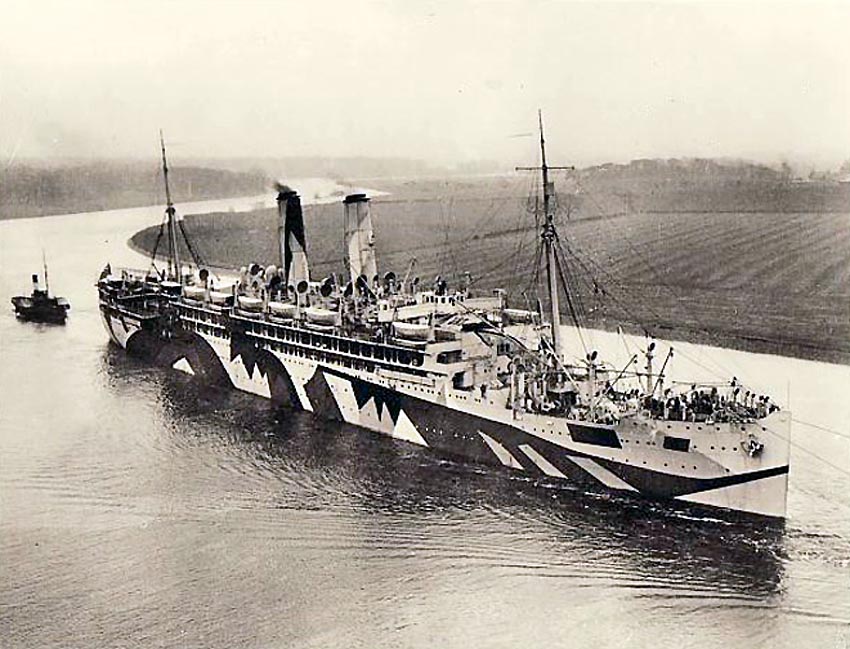
Photo from the
State Library of
During her service, the trooper, Ormonde was
attacked on three occasions by U-boats, yet she survived each attack! H.M.T. Ormonde’s last Government voyage departed on April 8,
1919 and she repatriated wives, and families of serviceman from
3. RMS Ormonde:
Her First Class Public venues were traditionally fitted out in true British style of the time, with rich timbers, marble, fine carpets, incorporating the best furnishings and the Main Lounge features a grand partially stained glass dome in the centre of the venue, as well as a grand stairwell going down aft of the room. The Dining Room was blessed with a great deal of light due to the many large windows, thus it was a bright and a fine venue to dine in. The ceilings were superbly embossed and the chairs were of the highest quality and ensured great comfort. Cabins also were well designed, offering from deluxe suites to twin bedded staterooms to single bedded cabins. Second Class public venues were similar to First Class, although of a somewhat lesser grandeur. Cabins also were of a high standard, but offering from single, twin, up to four berth cabins. Third Class was to say the least very humble, as this class was essentially for the migrant service, and although there were some four, six, and eight berth cabins, but also larger dormitories. Public venues were simple halls with bench seating and Dining Rooms very similar, bench seating with long tables.
Photographs:
Please note, these photographs come out of a very old catalogue that has both the Deck Plan of the Ormond, which can be seen on Page Two, and some of these images, others are also from my collection. I am sorry for their imperfect state, but it is better than nothing, and I have tried to improve them as much as was possible. I commence with First Class and then to Third Class as sadly I only have a single image of a Second Class cabin. Enjoy!
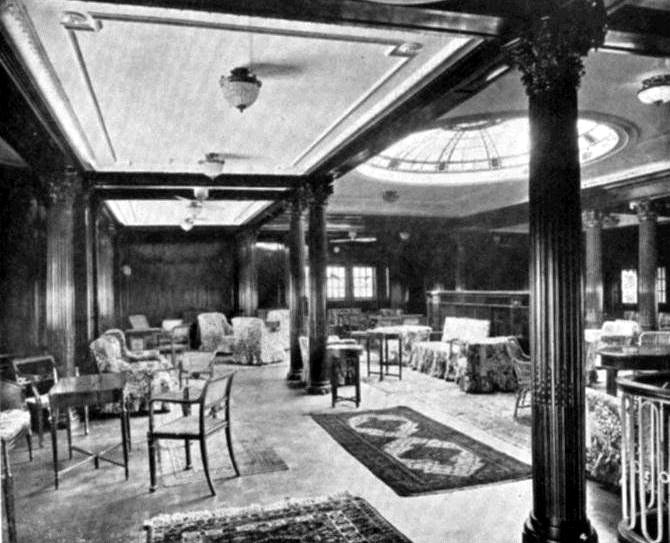
Above we see the First Class Main Lounge far forward on Promenade (B) Deck
Below we see the Dining Room
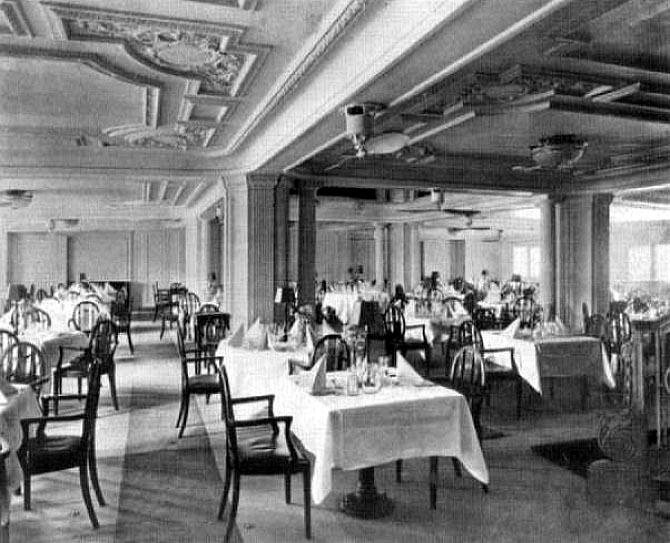
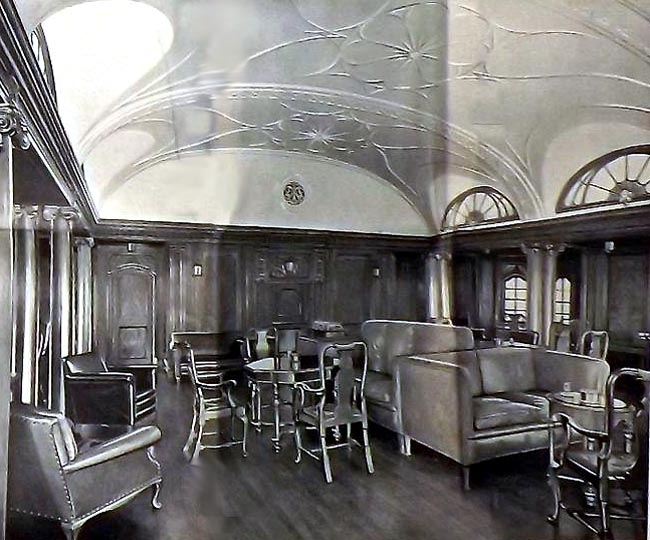
Above is the First Class Smoking Room aft on
Promenade (B) Deck
Below is the Drawing room forward but just aft of
the Lounge
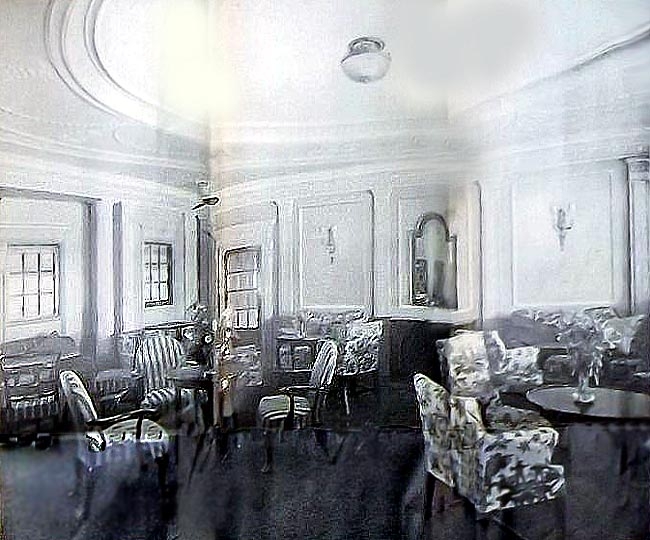
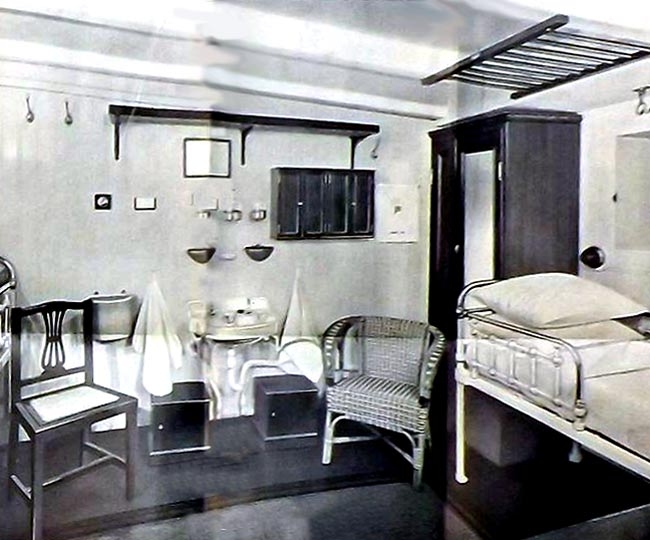
A typical First Class two bedstead cabin with a
window
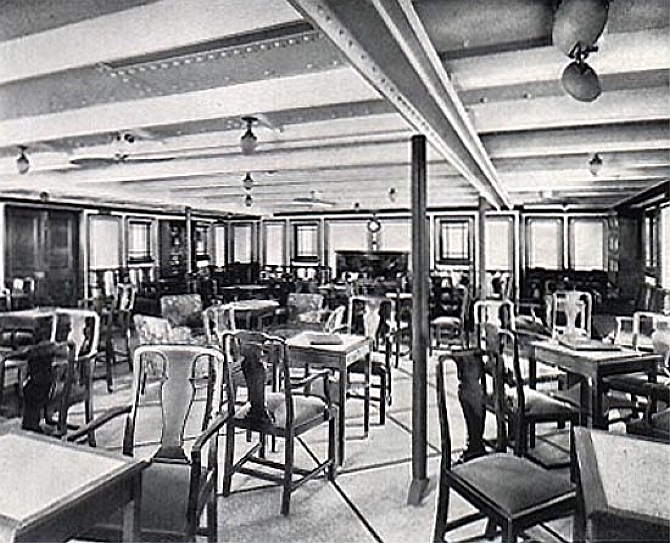 -
-
Above we see the Third Class Lounge aft on E Deck
Below the Third Class pleasant Dining Room
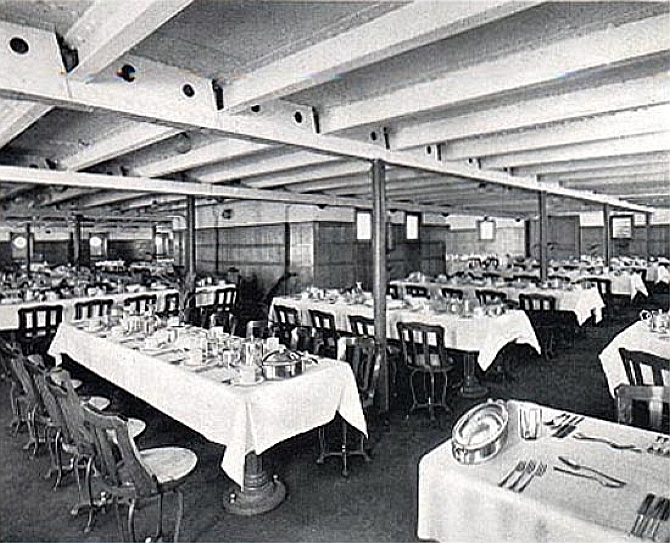
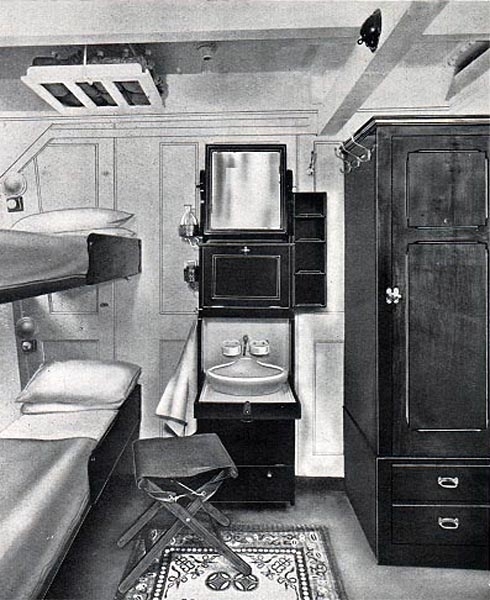
Above a Second Class two-berth cabin
Below a Third Class single bed cabin
They are amazingly
similar, but you will note certain differences as the 2nd.class is superior.
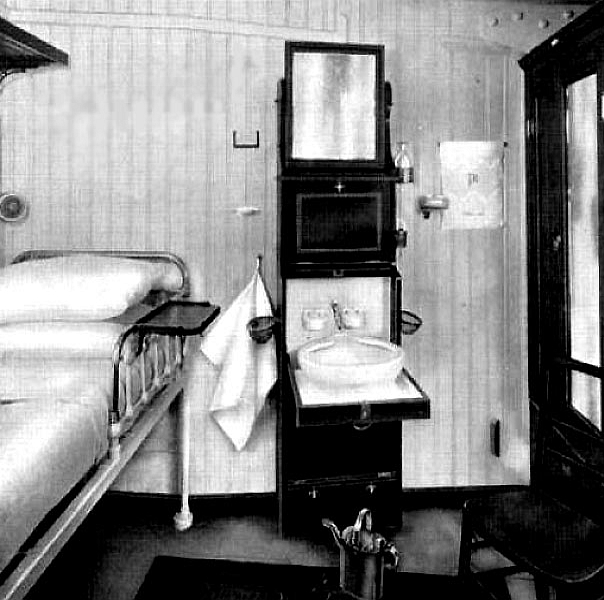
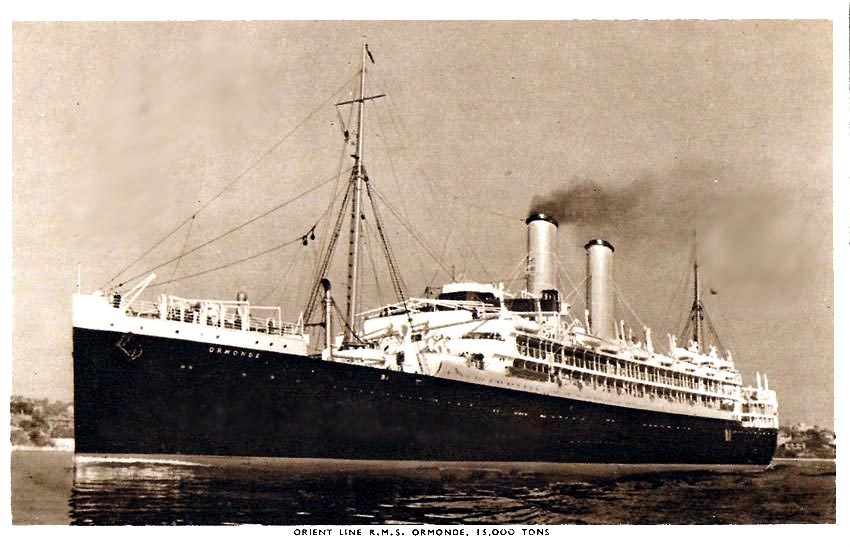
R.M.S.
stands for “Royal Mail Ship” as these British ships operated a
postal service
4. Her Commercial Maiden Voyage:
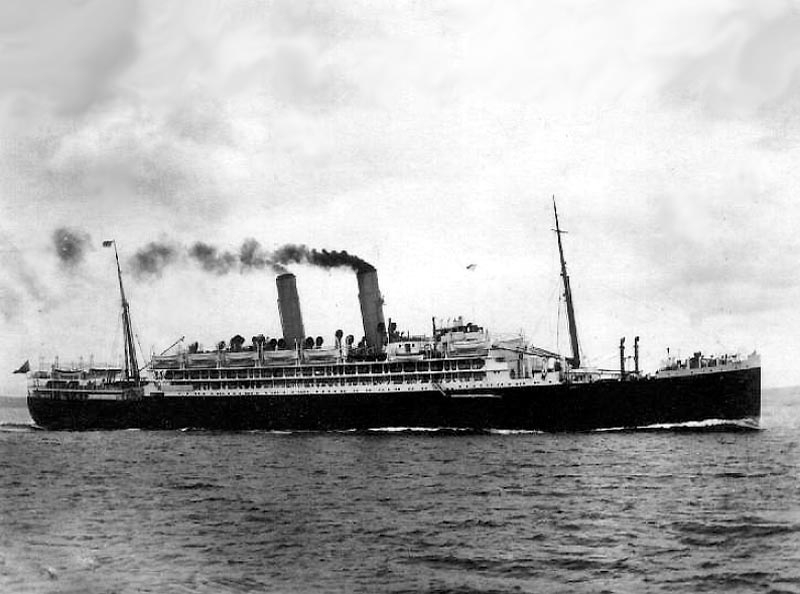
The R.M.S. Ormonde
steams on her way to
Her schedule was as follows:
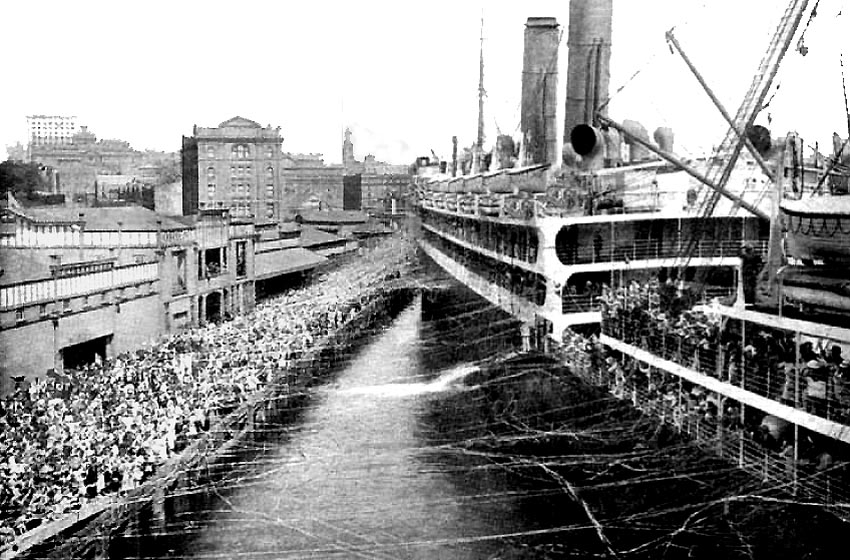
full-fare paying passengers and here we see her departure as family and
friends come and wave goodbye!
On April 2, 1920 the ‘Ormonde’
struck the bank whilst in the Suez Canal, which damaged two blades of her port
propeller, yet, she was able to continue to
In 1922 Orient Line offered the British
public the very first programme of cruises to
5. A Time of Change:
Considering her the Ormonde was built as a
coal fired ship, but Orient Line had decided to convert her to burn a more
economical oil fuel, which was done in April 1923.
She returned to service and her new oil
burning fuel system rapidly proved to be cost effective! The Ormonde just
happened to be in Sydney on Australia’s most special Day of the year in
1931, as it was “Foundation (or Regatta) Day” that just four years
later in 1935 officially became known as “Australia Day” and is a
public holiday. However, it was a long established custom to have a regatta of
vintage vessels and yachts sail from Sydney Heads and sail under
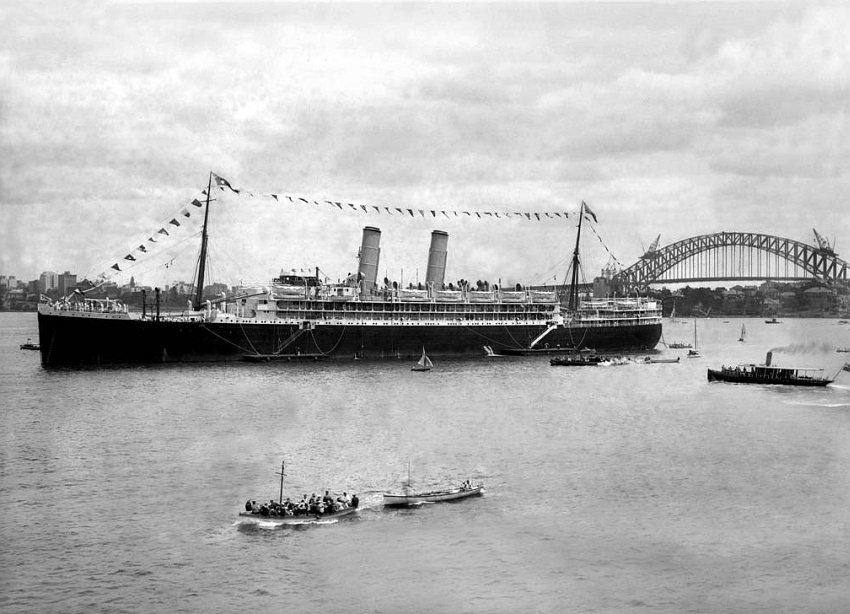
Then the ‘Ormonde’ was given yet another change in 1933, as she was given a refit to become a One Class Liner, accommodating just 770 Tourist Class passengers and she was listed as being 14,983 GRT. She returned to duties, but this time operating together with the veteran R.M.S. Orsova, which commenced her maiden voyage on June 29, 1909.
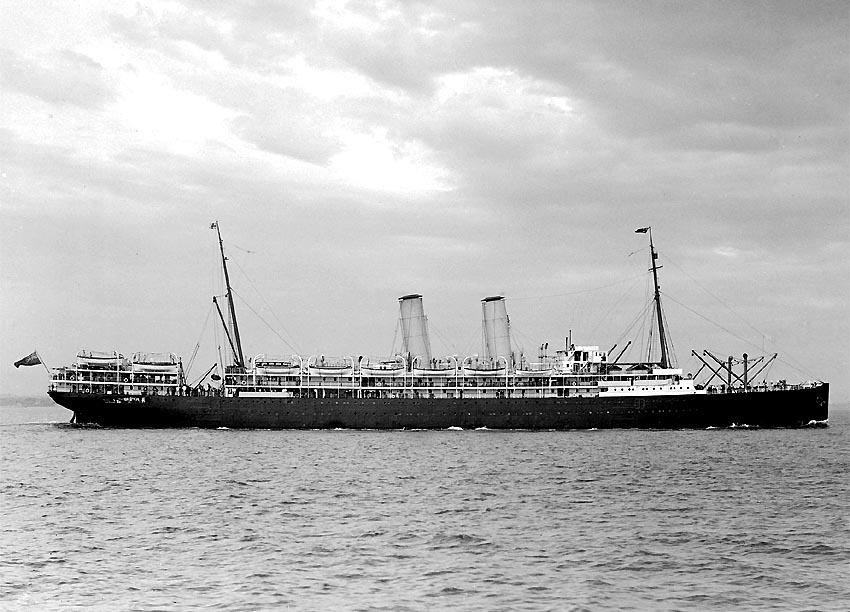
The 12,036 GRT – R.M.S. Orsova was sadly
broken up just three years later in 1936
Their new schedule was as follows:
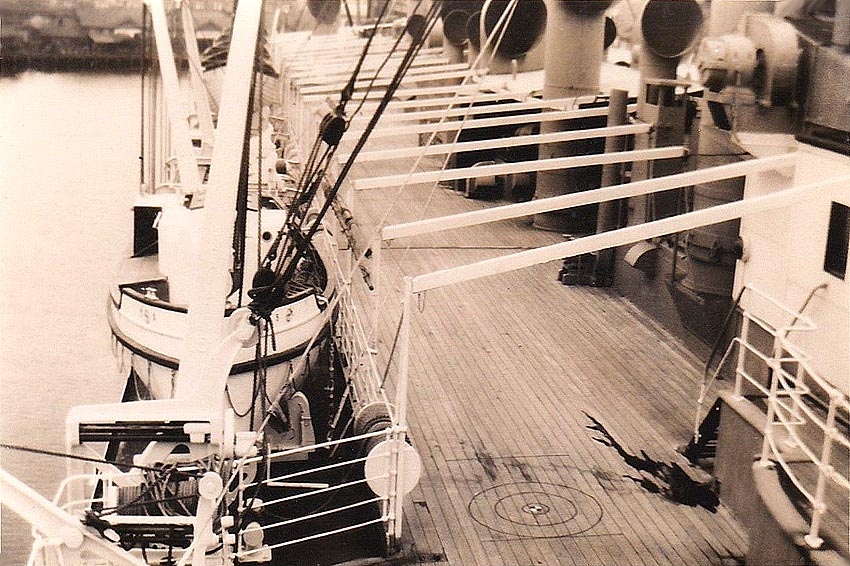
Some three years later, on September 23, 1936
the RMS Ormonde caught small fire between Melbourne and Sydney and she put in
to the old whaling anchorage at “Twofold Bay” and remained
overnight and continued to
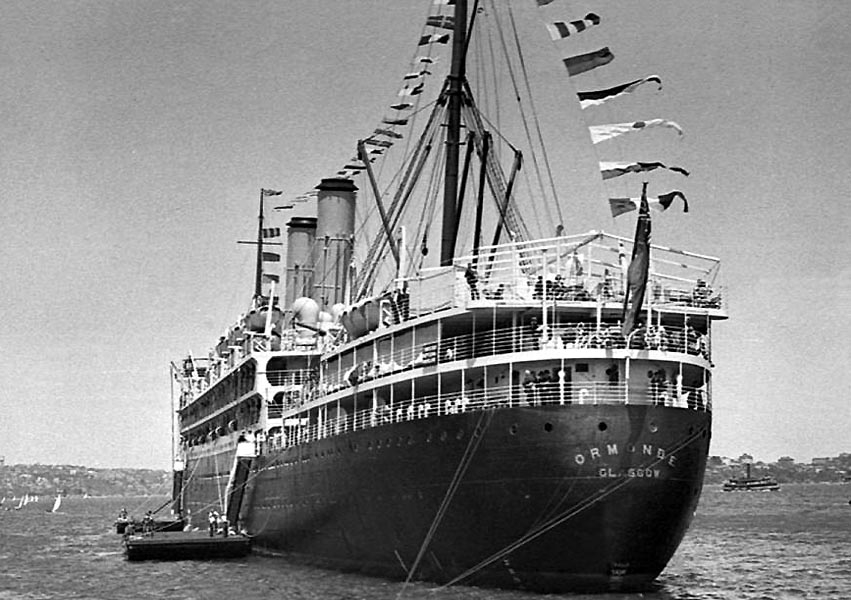
R.M.S. Ormonde is seen in
This is a fine stern view of the ship!
Photographer is unknown - Please see the photo notes at the bottom of the page
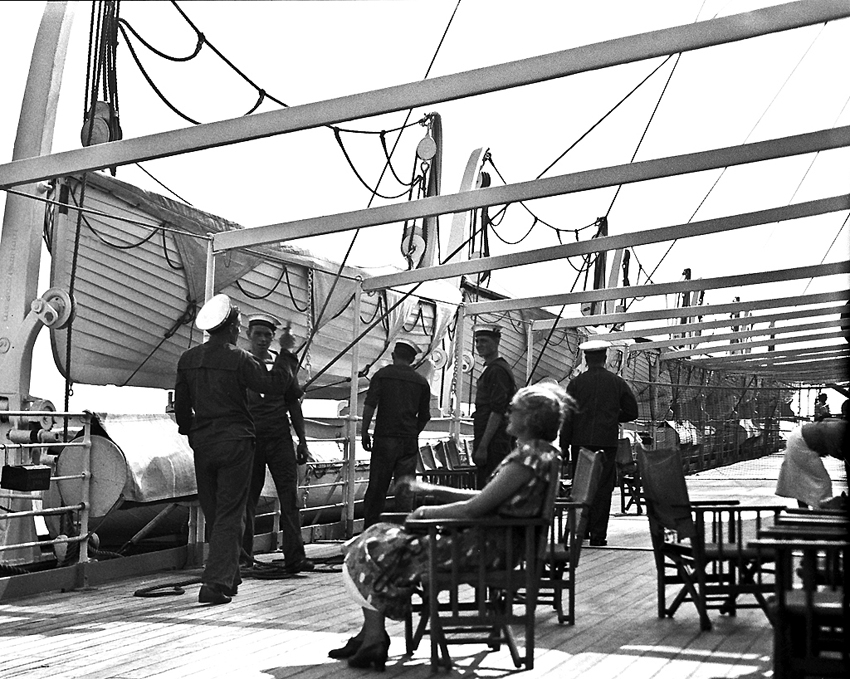
A superb photograph of her Sports Deck in her early days
Photograph was
sourced from a glass negative purchased at an
& is owned & kindly provided to ssmaritime by Fredrik Thorsen
6. World War Two:
November 1939 with World War Two commencing,
she was once again called upon by the Admiralty, who requisitioned her to
become a troop transport ship once again. She was again refitted at her
builder’s yards receiving 1,560 berths for troops.
She was despatched on May 30, 1940 to
assist with the withdrawal from Narvik, north in
During 1941/1942 the H.M.T. Ormonde operated
trooping services to
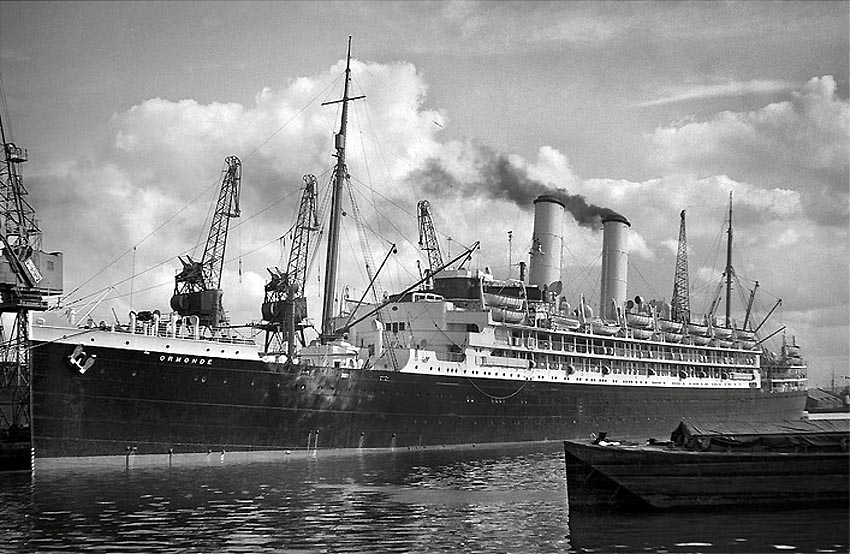
Photograph by & © John Currin
In November 1942 the H.M.T. Ormond landed
troops in
Having steamed over 300,000 miles and
transported more than that 120,000 troops the H.M.T. Ormonde was released from
government services and the head for the Cammell Laird shipyards at
On October 10, 1947 the R.M.S. Ormonde
departed

The R.M.S. Ormonde is seen here in the
Photo from the
State Library of
Upon her return voyages to the
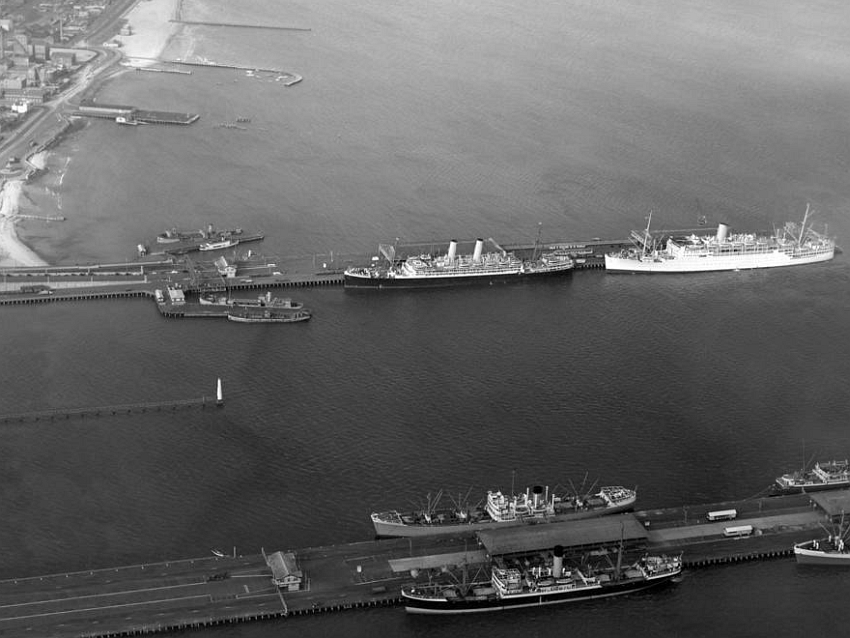
berthed together at Station Pier Melbourne on February 28, 1948
Photographer is unknown - Please see the photo notes at the bottom of the page
In March 1950 the Ormonde was chartered to
Dutch government to help evacuate their citizens who were escaping the troubled
waters from
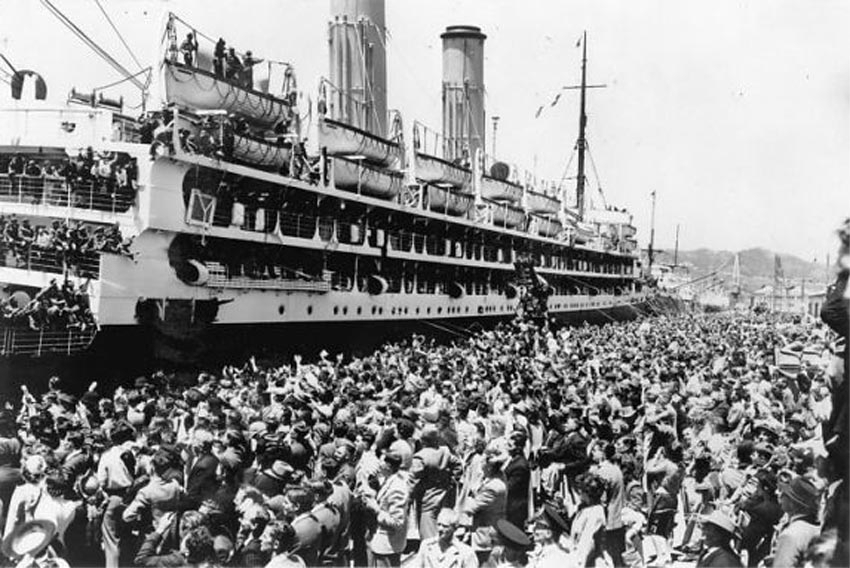
as K-Force troops head for
Photo from the
Alexander Turnbull Library,
However the Ormonde continued her regular line
voyages to and from
8. Specifications RMS Ormonde:
Type:……………………………………….Passenger liner.
Namw: R.M.S. Ormonde.
P&O Group service:…………………1918-1952.
Registered owners:…………………Orient Steam Navigation Company Ltd.
Managers:……………………………….Anderson Green & Company Ltd.
Operators:………………………………..Orient Line.
Builders:………………………………….John Brown & Co Ltd,
Yard number:………………………….425.
Registry:………………………………….London,
Official number:………………………141866.
Signal letters:………………………….JRQF.
Classification Society:…………….Lloyd’s Register.
Gross Tonnage:………………………14,853 GRT as built.
1933:………………………………………14,983 GRT after refit in 1933.
Net Tonnage:………………………….9,053 NRT.
Deadweight:……………………………8,113 tons
Length:…………………………………..599.1ft - 182,5m.
Breadth:………………………………….66.7ft - 20.32m.
Draught:…………………………………27.4ft - 8.327m.
Propulsion:…………………………….4 Geared steam turbines, by John Brown.
Power:………………………….…………2,120 NHP, 15,000 SHP.
Propellers:………………………………Twin Screws
Service Speed:……………………….18 knots, Max 24.6 knots.
Passengers:…………………………….278 First, 196 Second & 1,017 Third Class.
1933:………………………………………779 Tourist Class.
1949:……………………………………..1,052 One Class.
Crew 1919:…………………………….497.
Cargo Capacity:………………………370,398 cubic feet - including …
……………………………………………….101,635 cubic feet Refrigerated Space.
Livery:…………………………………….Black hull, buff funnels, red boot topping.
Employment:………………………….UK to
……………………………………………….Troopship operations WWI & WW2.
9. RMS Ormonde’s Final Five Years:
Between October 1947 and the end of 1952, the RMS Ormonde operated 17 emigrant voyages, which saw a good 17,500 British emigrants come to Australia and the ship was a good old liner but her machinery was aging, yet the ship generally was in good shape, but Orient Line had commenced building magnificent new and much larger liners! Thus soon it was her time to say Good Bye.
The Ormonde departed London for her very last ever voyage to Australia on Thursday August 21, 1952 and she returned to the United Kingdom, arriving at Tilbury for the final time on Wednesday November 19, 1952.
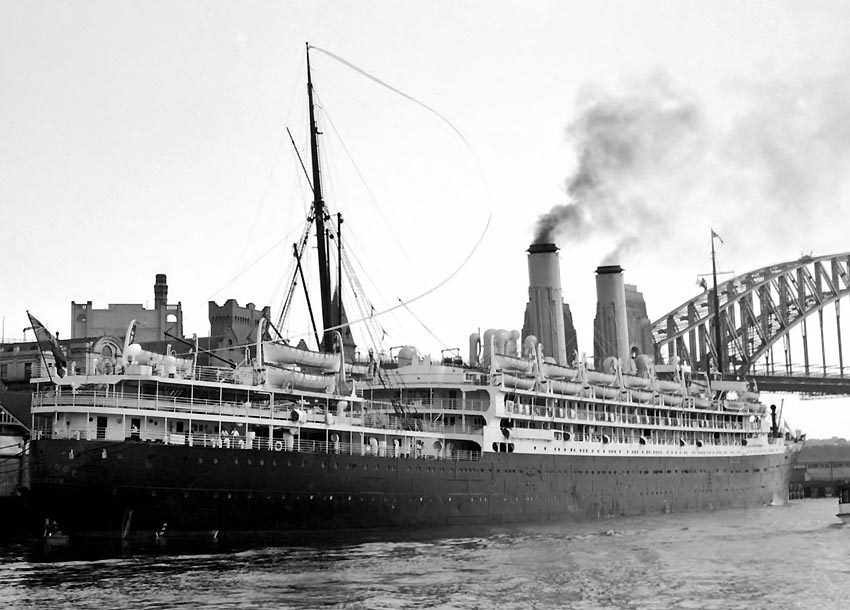
Her long payoff
pennant can be clearly seen flying from her aft Mainmast revealing her many
years of service
The wonderful and a successful career of the RMS Ormonde was sadly over for upon arrival it was announced that the 35 years old liner had been sold to the “British Iron & Steel Corporation” to be broken up.
It was on Thursday December
5, 1952 she headed to Dalmuir with W. H. Arnott, Young & Co in charge, and demolition of the
Ormonde was completed at Troon by “West of
Scotland Ship Breaking Co Ltd” on Tuesday May 5, 1953.
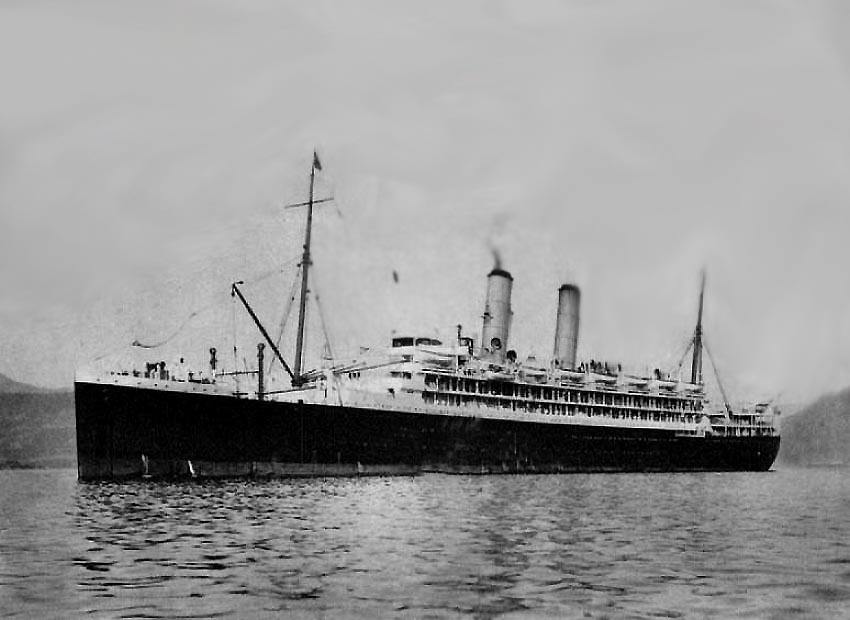
Go to Page Two for a copy of an Original
RMS
Ormonde Deck Plan
I watched them come, I watched them go and I watched them die.”
****************************
Loved R.M.S. Ormonde

*********************
Featuring over 1,550 Classic Passenger Liners, Passenger-Cargo Liners & Classic Cruise Ships!
Or ENTER HERE
For interest: Sadly an email service to ssMaritime is no longer available, due to the author’s old age and chronic illness as well as being disabled, etc. In the past ssMaritime received well over 120 emails per day, but Mr. Goossens can no longer handle same. He sincerely regrets this!
*********************
ssMaritime.com & ssMaritime.net
Where the ships of the
past make history & the 1914
built M.S. Doulos Story.
The Author has
been in Passenger Shipping & the Cruise Industry for well over 60 years
In addition he
was the founder of “Save the Classic Liners Campaign” in 1990.
Please Note: ssmaritime and associated sites are 100% non-commercial and the author seeks no funding or favours of any shape or form, never have and never will!
Photographs on ssmaritime and associate pages are by; the author or from the author’s private collection. In addition there are some images that have been provided by Shipping Companies and private photographers or collectors. Credit is given to all contributors. However, there are some photographs provided to me without details regarding the photographer/owner concerned.
This notice covers all pages; although, and I have done my best to ensure that all photographs are duly credited and that this notice is displaced on each page, that is, when a page is updated!
ssMaritime is owned
& © Copyright by Reuben Goossens - All Rights Reserved

